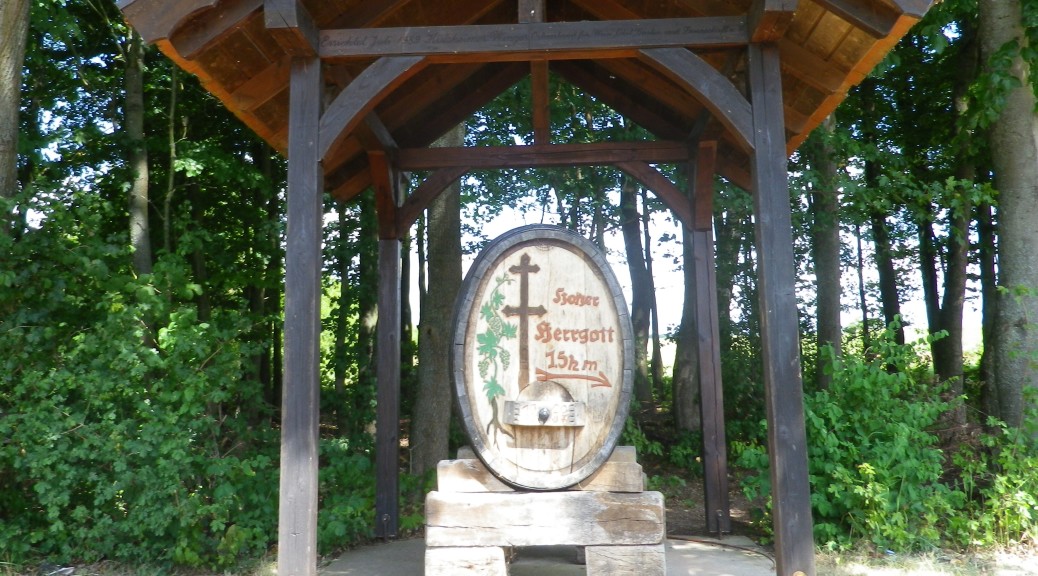What I Learned
The Taubertal (Tauber (River) Valley) is a very diverse wine growing area. Following along the course of the river, upstream to downstream, you find 3 regions and 4 districts represented: Franconia’s Mainviereck District, Baden’s Tauberfranken District, Wuerttemberg’s Kocher-Jagst-Tauber District, and Franconia’s Maindreieck District. All this within about 120 miles of a fairly narrow river valley! The frequent district changes reflect the diverse soils and growing conditions in each region. Of course, these differences result in a variety of unique wines produced along the Tauber.
Within the entire valley, vineyards cover about 1100 hectares, 65 percent of these dedicated to the cultivation of white varietals. The leading varietals are Mueller-Thurgau and Sylvaner. Schwarzriesling (Pinot Meunier) leads the reds. (Figures from the Weinland Taubertal organization.)
One wine growing district in particular is unique to this small river valley: the Tauberfranken. Although a long distance from Baden, this small area is technically part of that wine region. It centers on Lauda-Koenigshofen. Monastic foundations brought viticulture to the area centuries ago. The cloisters of Bronnbach and Gerlachsheim in a small way are reminiscent of this tradition: Bronnbach is now a wine shop, and just outside Gerlachsheim is the locally renowned Herrenberg vineyard.
A surprising number of red varietals grow in Tauberfranken: Schwarzriesling, Spaetburgunder (Pinot Noir), Zweigelt, Regent and Tauberschwarz, a native grape variety, not commonly seen, even in Germany. The region’s most sought after wines tend to be the Grauburgunder (Pinot Gris). Other white varietals include Weissburgunder (Pinot Blanc), Mueller-Thurgau, Sylvaner, Riesling, Chardonnay, Kerner, and Gewuerztraminer
Wuerttemberg’s Kocher-Jagst-Tauber District lies on both sides of the Tauber from roughly Rothenburg ob der Tauber to Bad Mergentheim. It also covers a narrow area south and west from Weikersheim, following the Vorbach (stream) to the higher elevations of this area, around Niederstetten.
What I Tasted
2013 Weissburgunder, Gerlachsheimer Herrenberg, Kabinett, Trocken, Weingut Guenter (Baden/Tauberfranken): A dry white wine with a darker light gold color; a fruity nose, with vanilla, fruit and citrus notes; mildly acidic, with a touch of sweetness. (See same Tauberfranken wine notes entry)
2013 Chardonnay, Gerlachsheimer Herrenberg, Kabinett, Trocken, Kilian line of Becksteiner Winzer (Baden/Tauberfranken): A dry white wine with medium gold color; very mild grape flavor, and mild minerality; Medium mouthfeel, very smooth and well-balanced.
2013 Grauer Burgunder, Becksteiner Kirchberg, Kabinett, Trocken, Kilian line of Becksteiner Winzer (Baden/Tauberfranken): A dry white wine with medium gold color; earthy nose, and green apple and slight pear notes; Medium acidity.
2013 Grauer Burgunder, Becksteiner Kirchberg, Spaetlese, Trocken, Kilian line of Becksteiner Winzer (Baden/Tauberfranken): A dry white wine with medium gold color; apple nose, and vanilla, fruit and slight smoke flavors. Mild acidity and medium mouthfeel.
2012 Grauer Burgunder, Kabinett Trocken, Markelsheimer Tauberberg, Weingaertner Markelsheim (Wuerttemberg/Kocher-Jagst-Tauber District): A dry white wine with light gold color; notes of rose and a hint of minerality; tart with high acidity.
Markelsheimer Sekt, (Wuerttemberg/Kocher-Jagst-Tauber District): A dry sparkling white wine with light gold color; floral notes as well as sweet citrus notes, and a hint of mint. Medium body and well-balanced.
